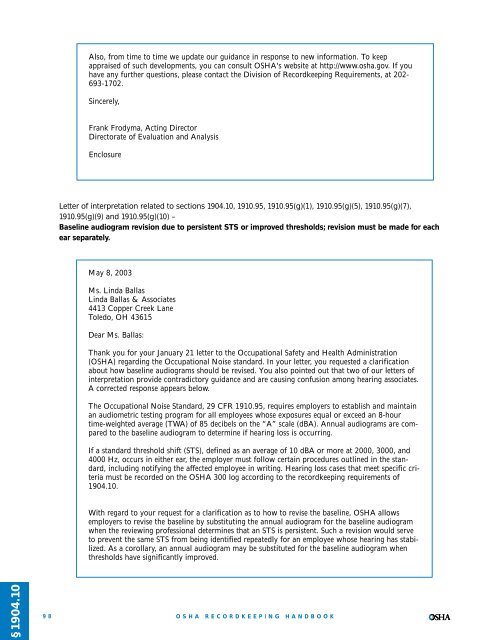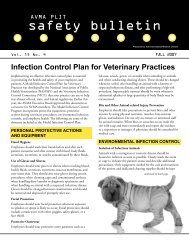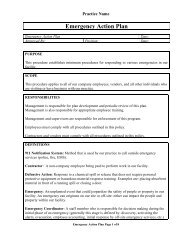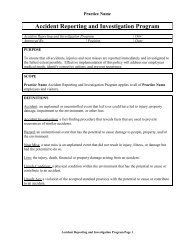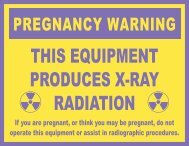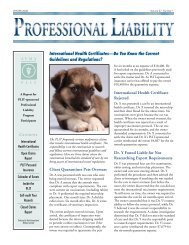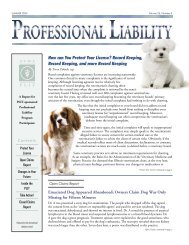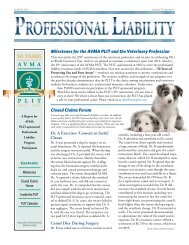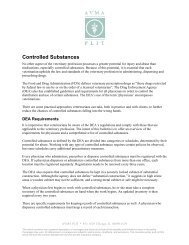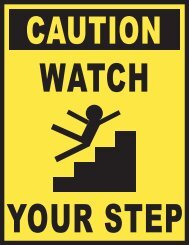OSHA Recordkeeping Handbook - denix
OSHA Recordkeeping Handbook - denix
OSHA Recordkeeping Handbook - denix
- No tags were found...
You also want an ePaper? Increase the reach of your titles
YUMPU automatically turns print PDFs into web optimized ePapers that Google loves.
Also, from time to time we update our guidance in response to new information. To keepappraised of such developments, you can consult <strong>OSHA</strong>'s website at http://www.osha.gov. If youhave any further questions, please contact the Division of <strong>Recordkeeping</strong> Requirements, at 202-693-1702.Sincerely,Frank Frodyma, Acting DirectorDirectorate of Evaluation and AnalysisEnclosureLetter of interpretation related to sections 1904.10, 1910.95, 1910.95(g)(1), 1910.95(g)(5), 1910.95(g)(7),1910.95(g)(9) and 1910.95(g)(10) –Baseline audiogram revision due to persistent STS or improved thresholds; revision must be made for eachear separately.May 8, 2003Ms. Linda BallasLinda Ballas & Associates4413 Copper Creek LaneToledo, OH 43615Dear Ms. Ballas:Thank you for your January 21 letter to the Occupational Safety and Health Administration(<strong>OSHA</strong>) regarding the Occupational Noise standard. In your letter, you requested a clarificationabout how baseline audiograms should be revised. You also pointed out that two of our letters ofinterpretation provide contradictory guidance and are causing confusion among hearing associates.A corrected response appears below.The Occupational Noise Standard, 29 CFR 1910.95, requires employers to establish and maintainan audiometric testing program for all employees whose exposures equal or exceed an 8-hourtime-weighted average (TWA) of 85 decibels on the “A” scale (dBA). Annual audiograms are comparedto the baseline audiogram to determine if hearing loss is occurring.If a standard threshold shift (STS), defined as an average of 10 dBA or more at 2000, 3000, and4000 Hz, occurs in either ear, the employer must follow certain procedures outlined in the standard,including notifying the affected employee in writing. Hearing loss cases that meet specific criteriamust be recorded on the <strong>OSHA</strong> 300 log according to the recordkeeping requirements of1904.10.With regard to your request for a clarification as to how to revise the baseline, <strong>OSHA</strong> allowsemployers to revise the baseline by substituting the annual audiogram for the baseline audiogramwhen the reviewing professional determines that an STS is persistent. Such a revision would serveto prevent the same STS from being identified repeatedly for an employee whose hearing has stabilized.As a corollary, an annual audiogram may be substituted for the baseline audiogram whenthresholds have significantly improved.§1904.1098<strong>OSHA</strong> RECORDKEEPINGHANDBOOK


